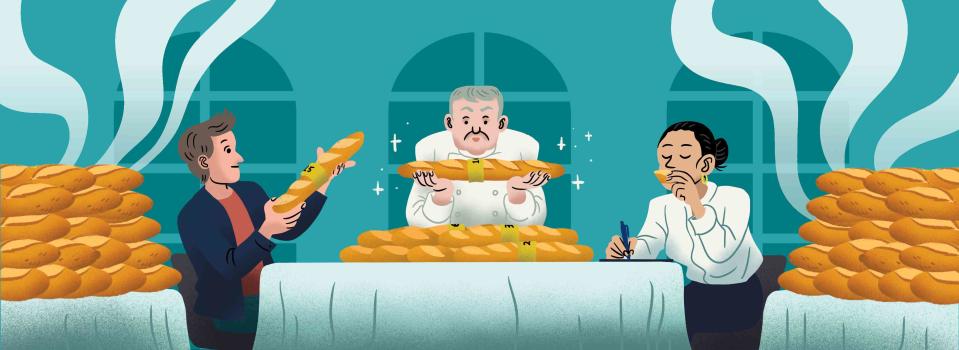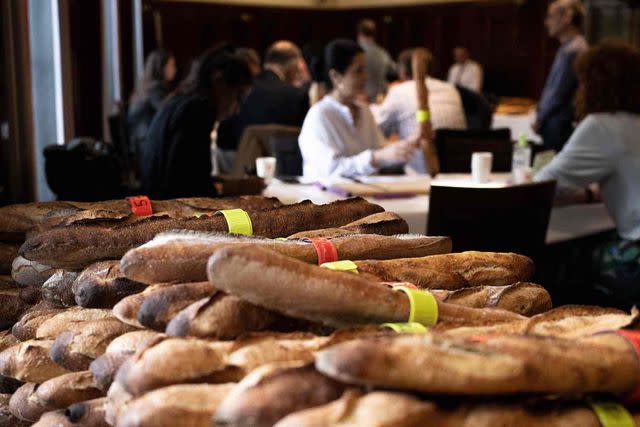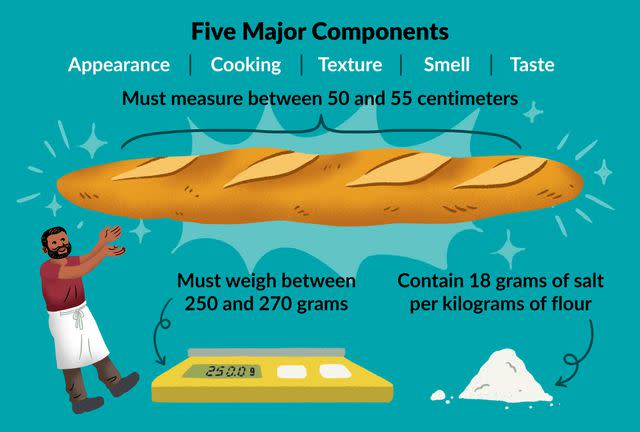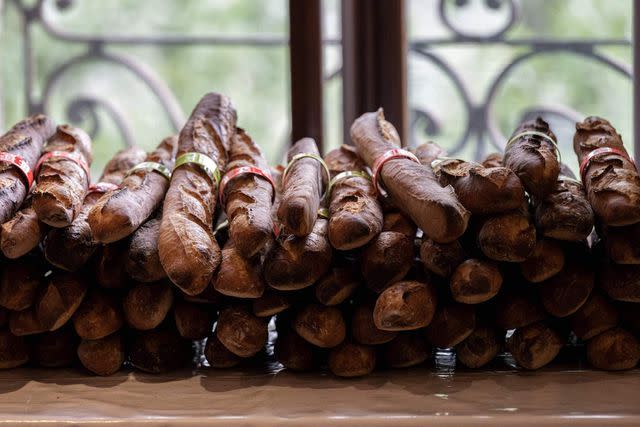Inside the Annual Competition That Determines the Best Baguette in Paris
France makes around 16 million baguettes daily.

Josh Seong / TripSavvy
Like the hunt for the best bagel in New York or the best deep-dish pizza in Chicago, the search for the best baguette seems subjective. But leave it to the French to define, in very specific terms, how a proper baguette should look, taste, feel, and smell.
The humble baguette is, after all, a French staple, with around 16 million made daily in France and a whopping six billion sold a year. The baguette was even added to UNESCO’s "Intangible Cultural Heritage" list in November 2022.
“Most French people have some baguettes at least once a day. The baguette is part of our heritage: A day without bread is like a face without a smile,” the team at Hotel Montalembert, a boutique hotel in Paris, told TripSavvy. “The French are famous for l’art de saucer. When we eat a good dish with sauce, we always use some baguette to saucer notre assiette — or sauce our plate”

ALAIN JOCARD/AFP via Getty Images
Each year, Paris hosts an annual competition that determines the best baguette in the French capital and, eventually, the best baguette in all of France. For the former, called “Le Grand Prix de la Baguette de Tradition Française de la ville de Paris,” a panel of judges is gathered for a blind tasting. The panel is made up of experts in the baking community, previous winners, journalists, and six randomly selected Parisians.
To qualify for the tasting, each loaf must measure between 50 and 55 centimeters, weigh between 250 and 270 grams, and contain 18 grams of salt per kilogram of flour. The loaves are then given to the judges, who score each baguette on five components: appearance, cooking, texture, smell, and taste.

Josh Seong / TripSavvy
The winner gets a year-long contract to supply baguettes to the president of France at the Élysée Palace, along with 4,000 Euros (roughly $4,320) and the distinction of making “the best baguette in Paris.” (It’s worth noting that there are 1,122 bakers listed in Paris and only 175—or just over 10 percent—submitted their baguette into the contest in 2023, according to Le Monde, a French daily newspaper.)
The winner and first runner-up of the Paris competition move into the regional competition a few days later. Eventually, if they qualify, they proceed to the national contest, which takes place during the Fête du Pain, a public celebration of bread that’s held in front of the Cathédrale Notre-Dame de Paris. In 2023, all three contests took place over the course of a week.
“Food is in every conversation in France. This competition is the talk of the town and every Parisian will, at some point, try the baguette at the winner’s boulangerie,” said the Hotel Montalembert team.
Just keep in mind that the French baguette looks a bit different than the puffy, tan-colored baguettes most Americans are familiar with. The “baguette de tradition” that’s being evaluated in these competitions has a hard, almost black exterior and a chewy interior.

ALAIN JOCARD/AFP via Getty Images
“A good baguette is crispy and has an airy crumb,” confirmed the Hotel Montalembert team. The ingredient list is short: flour, water, salt, and yeast. And because it contains absolutely no chemicals or preservatives, it has a shelf life of around five hours.
In addition, a proper baguette de tradition must be made by hand and sold in the place where it’s baked. (So, you won’t find the winning baguette anywhere but in the bakery where it was made.)
In 2023, the winner of the 30th annual “Grand Prix de la Baguette de Traditional Francaise de la Ville De Paris” was Sri Lankan-origin baker Tharshan Selvarajah's Au Levain des Pyrénées bakery. The winner of the national contest was Ludovic Desoeuvres and La Fournée des Fables bakery in Château-Thierry, a town one hour from Paris.
As for the baguettes that didn’t meet the specifications in 2023, they weren't made in vain. The leftovers were given to La Chorba, a nonprofit that uses food waste to feed those experiencing food insecurity.
Read the original article on TripSavvy.

